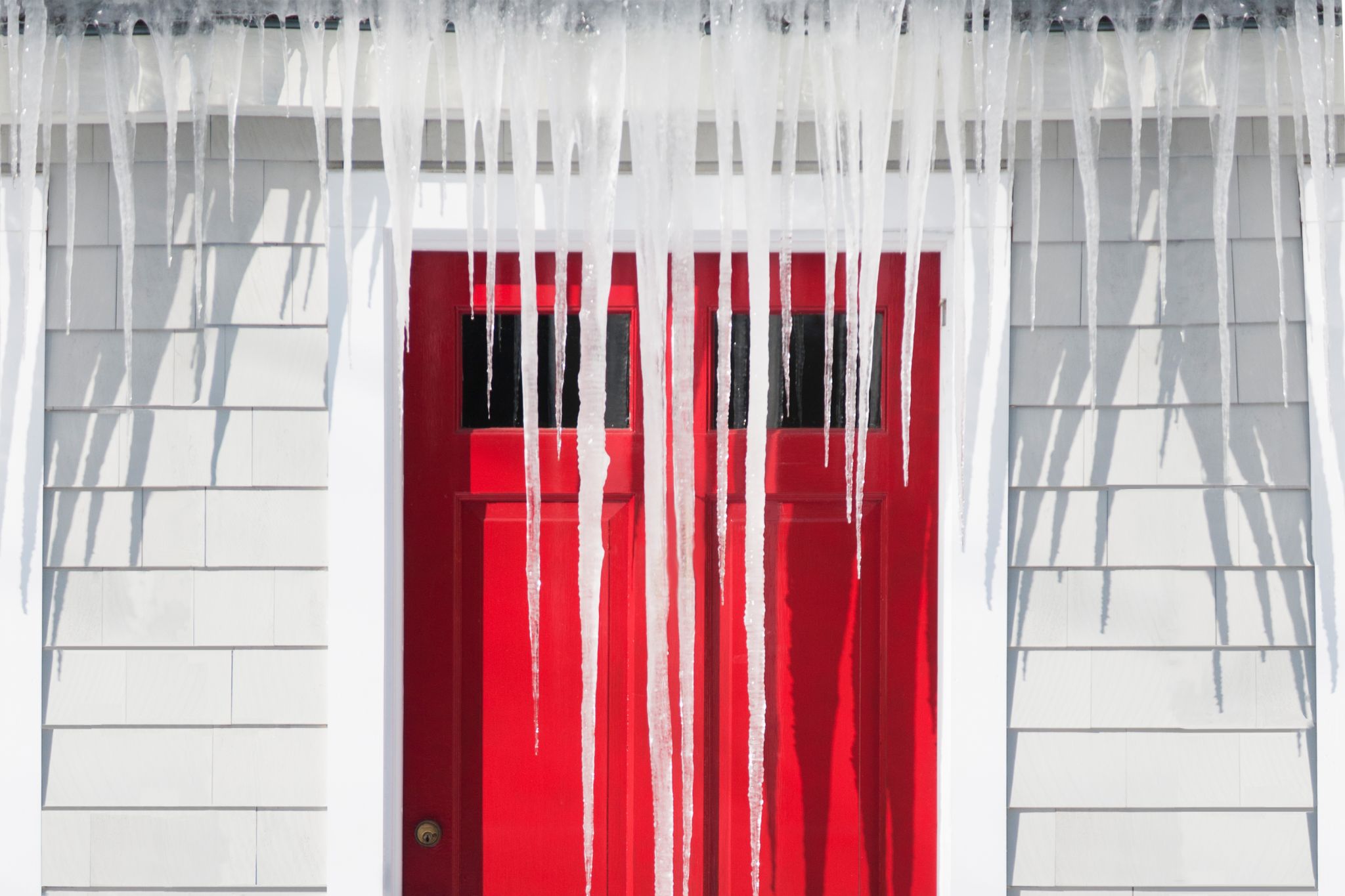Those beautiful, shiny icicles hanging from your roof are not cool.
They're a really, really bad sign that you may have an ice dam — a ridge of ice along the edge of your roof that can damage your house and your wallet.
But don't freak out. Just be in the know about these six things, and you can save your budget from hypothermia this winter.
#1 They'll Destroy Your Roof's Insulation
So here's how ice dams work: When heat escapes through your roof, it melts the snow up there.
Then it gets cold again, and that water freezes along the ridge of your roof. If this happens enough, the ice builds up into an ice dam.
Once the ice dam is established, when the warm air melts more snow, that water gets trapped behind the ice dam and just hangs out there in a puddle.
Water is not supposed to puddle up on your roof. It can seep down through the roof (science calls this a "leak," FYI), and turn your insulation into a wet mess.
But that's only the beginning ...
#2 They'll Infest Your House With Mold
Once your insulation is that soggy mess, something worse could be lurking.
MOLD! Ugh. It's nasty. And it's expensive to make go away.
Fittingly, the way to prevent it is (ta-da!) good insulation. So your roof doesn't get too warm in the first place.
"Most ice dams are caused by a warm attic, which can be fixed if people would just call the professionals in," says Joe Palumbo of ice mitigation company The Ice Dam Guys.
Having sufficient insulation is key, but keep in mind that a well-insulated attic has to be balanced with good ventilation. An attic shouldn't be more than 15 degrees hotter than rest of the house. If it is, you need better ventilation.
Not sure about your insulation/ventilation balance? You can find a home energy auditor through the Residential Energy Services Network, or — even better — check with your local energy utility, as many of them offer free audits to customers.
#3 They'll Send Water Pouring Down Your Walls
Count yourself lucky if you caught the ice dam in time so that moldy insulation was the only problem.
A really bad leak will continue right through the insulation to destroy walls, ceilings, flooring — pretty much everything it touches (and spread that nasty mold around!).
That's a great way to wave goodbye to the Dream Deck Savings Account you've been working on for years.
One way to ensure you never get a catastrophic leak is to up there to melt into one.
This can be done with a special roof rake (it's a thing!) if your roof is low enough, or by calling in pros who know how to climb around on roofs in the snow without breaking themselves.
#4 They'll Rip Down Gutters and Pull Roof Shingles Loose
Ice dams weigh a ton (literally!).
Which means all that weight can tear gutters away from your house, pull shingles loose from your roof, and generally cause stress on your home's exterior.
But if there's no ice, there's no ice damage.
So make sure your home's insulated — and well ventilated (see #1) — and you shouldn't have a problem.
But if you see one forming, try this DIY trick: Fill pantyhose with an ice-melt product, and place on freezing-prone points of your roof.
Your home won't win any beauty pageants, but in the short term, this DIY trick can save you some serious grief.
#5 They'll Damage Something (or Someone!) Special to You
Did we mention how heavy ice dams are? Weight can inflict damage. A ton of it! And in dangerous ways you don't even want to think about. Like suddenly breaking loose and falling on:
- That azalea you nursed back to life last spring
- Your just-paid-off car
- Your dog
- You
If preventive measures haven't worked to keep them at bay — or you're just learning about ice dams too late to prevent one — getting rid of an ice dam as quickly as possible is crucial.
This is where companies like The Ice Dam Guys come in.
You may have been an icicle-harvesting pro as a kid, but now that you're an adult with a home to protect, this is a job for the pros. Not only will they remove the dam safely, they can help you pinpoint the exact cause and identify damage.
#6 They'll Grow In Lots of Spots Around Your House — Not Just the Roof
It makes sense that ice dams can damage your roof. Duh. But ice danger just keeps going and going when it clings to any part of your house. Case in point: gas meters.
"That gas meter has a small breather that needs to breathe air," Palumbo says. “We've often seen it get iced up or covered in snow." A frozen-over meter can cause your gas to shut off unexpectedly — not the best winter surprise. Other places ice (and icicles!) hang out on:
- Tree limbs
- Playground equipment
- Outbuildings
- Anything outside that will let snow puddle on it when it melts
It's tempting to put your home maintenance blinders on during the frigid winter months, so try to carve out a little time between your cocoa-and-Netflix binges to pull on your boots and take a slow lap around the outside of your home.
Clearing away the beginnings of any ice buildup can save your wallet big time — and make more time for cozy viewing and sipping in the end.
